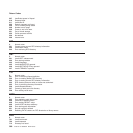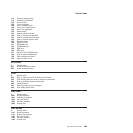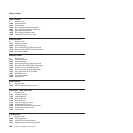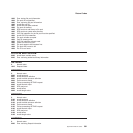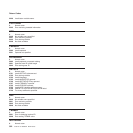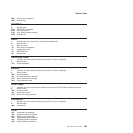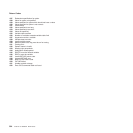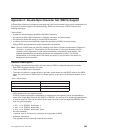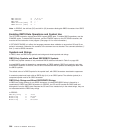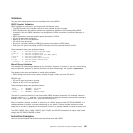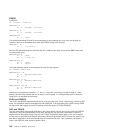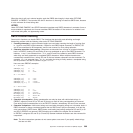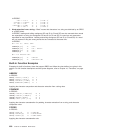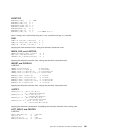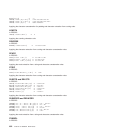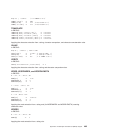DBCS character -> .A .B .C .D
SBCS character -> abcde
DBCS blank -> '. '
EBCDIC shift-out (X'0E') -> <
EBCDIC shift-in (X'0F') -> >
Note: In EBCDIC, the shift-out (SO) and shift-in (SI) characters distinguish DBCS characters from SBCS
characters.
Enabling DBCS Data Operations and Symbol Use
The OPTIONS instruction controls how REXX regards DBCS data. To enable DBCS operations, use the
EXMODE option. To enable DBCS symbols, use the ETMODE option on the OPTIONS instruction; this
must be the first instruction in the program. (See page 151 for more information.)
If OPTIONS ETMODE is in effect, the language processor does validation to ensure that SO and SI are
paired in comments. Otherwise, the contents of the comment are not checked. The comment delimiters (/*
and */) must be SBCS characters.
Symbols and Strings
In DBCS, there are DBCS-only symbols and strings and mixed symbols and strings.
DBCS-Only Symbols and Mixed SBCS/DBCS Symbols
A DBCS-only symbol consists of only non-blank DBCS codes as indicated in Table 5 on page 395.
A mixed DBCS symbol is formed by a concatenation of SBCS symbols, DBCS-only symbols, and other
mixed DBCS symbols. In EBCDIC, the SO and SI bracket the DBCS symbols and distinguish them from
the SBCS symbols.
The default value of a DBCS symbol is the symbol itself, with SBCS characters translated to uppercase.
A constant symbol must begin with an SBCS digit (0–9) or an SBCS period. The delimiter (period) in a
compound symbol must be an SBCS character.
DBCS-Only Strings and Mixed SBCS/DBCS Strings
A DBCS-only string consists of only DBCS characters. A mixed SBCS/DBCS string is formed by a
combination of SBCS and DBCS characters. In EBCDIC, the SO and SI bracket the DBCS data and
distinguish it from the SBCS data. Because the SO and SI are needed only in the mixed strings, they are
not associated with the DBCS-only strings.
In EBCDIC:
DBCS-only string -> .A.B.C
Mixed string -> ab<.A.B>
Mixed string -> <.A.B>
Mixed string -> ab<.C.D>ef
396 CICS TS for VSE/ESA: REXX Guide



